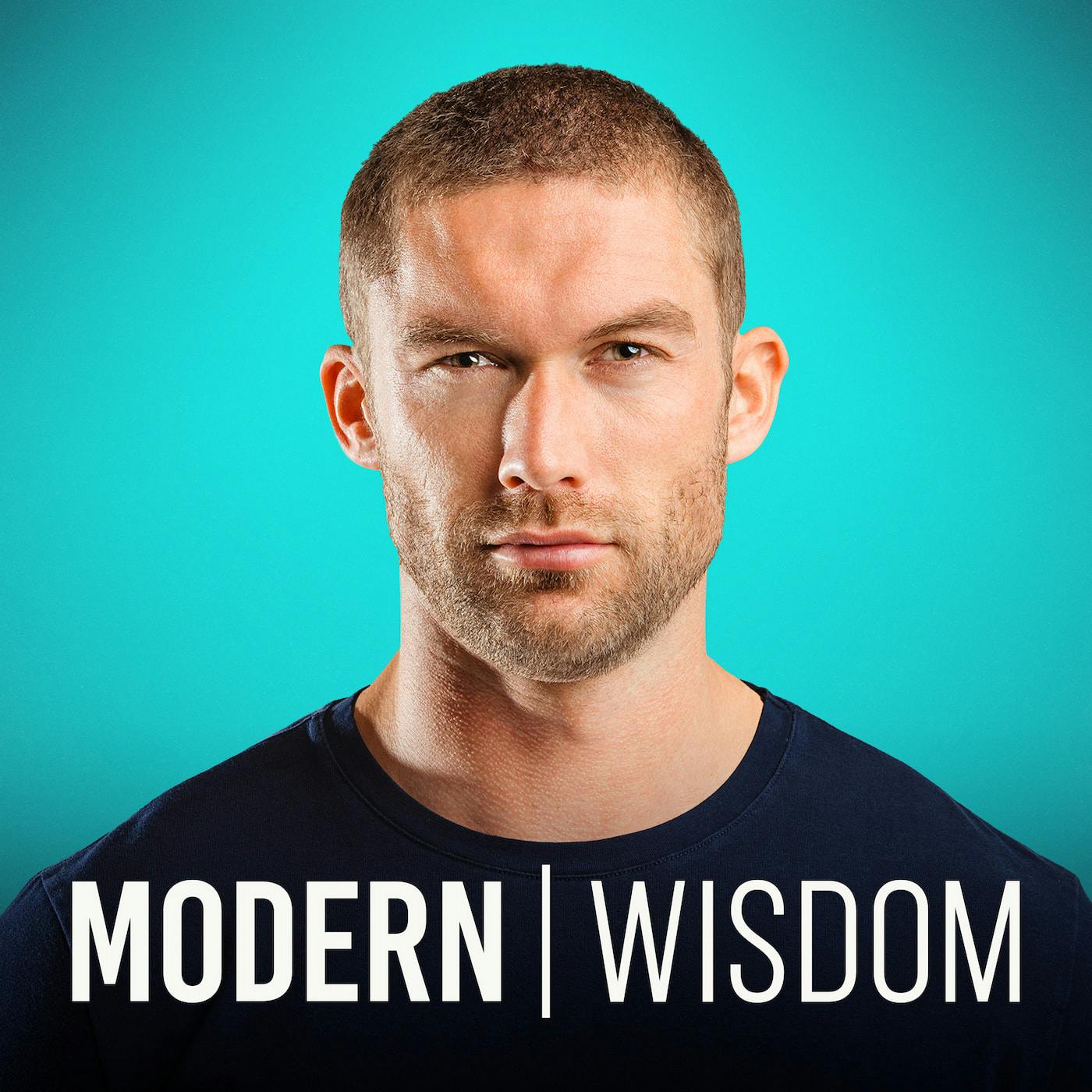
September 14, 2024 • 1hr 9min
#838 - Dr Paul Eastwick - What Do People Really Want In A Partner?
Modern Wisdom

Key Takeaways
- People are generally good at recognizing that some attributes like attractiveness, intelligence, and honesty are universally desirable in romantic partners
- There is often a discrepancy between people's stated preferences (what they say they want) and their revealed preferences (what actually predicts their attraction)
- The #1 revealed preference was "good lover", even though it ranked much lower in stated preferences
- Other traits that were underestimated in importance: smells good, sexy, nice body
- Traits that were overestimated: patient, emotionally stable
- Men and women showed similar revealed preferences for traits like attractiveness and earning potential, despite differences in stated preferences
- People have some insight into their preferences across all traits, but struggle to accurately predict preferences for specific individual traits
- Current matchmaking algorithms likely can't effectively predict compatibility between specific individuals
- The chaotic, unpredictable nature of falling in love makes it very difficult to fully capture in research
Introduction
Dr. Paul Eastwick is a psychologist, professor and researcher who studies close relationships and mate preferences. In this episode, he discusses findings from one of the largest studies ever conducted on stated vs. revealed mate preferences across 43 countries. The study aimed to uncover what people actually want in romantic partners compared to what they say they want.
Topics Discussed
Stated vs. Revealed Preferences (4:55)
Eastwick explains the key distinction between stated and revealed preferences:
- Stated preferences are what people say they want when asked directly about ideal partner traits
- Revealed preferences are what actually predicts attraction/liking when encountering potential partners
The study looked at both types of preferences across 35 different traits to identify discrepancies. Eastwick notes that revealed preferences provide more insight into what drives actual attraction.
Key Findings on Preference Discrepancies (18:44)
Some of the most interesting discrepancies between stated and revealed preferences:
- Good lover was the #1 revealed preference but only ranked around 12th in stated preferences
- Smells good was 4th in revealed preferences but much lower in stated
- Sexy and nice body were also underestimated in importance
- Traits like patient and emotionally stable were overestimated in importance
Eastwick suggests people may underestimate the importance of physical/sexual traits when thinking abstractly about ideal partners.
Gender Differences (22:26)
Some key findings on gender differences:
- Men and women showed similar revealed preferences for traits like attractiveness, despite differences in stated preferences
- Women underestimated the importance of attractiveness more than men did
- For earning-related traits, women slightly overestimated importance while men underestimated
- Overall, revealed preferences were more similar between genders than stated preferences
Eastwick notes this aligns with previous research showing fewer gender differences in real-world mate selection compared to hypothetical preferences.
Accuracy of Self-Knowledge (31:54)
The study examined how well people know their own preferences:
- Across all 35 traits, there was a small but real "matching effect" - people desired partners who matched their stated preferences
- However, for individual traits, people struggled to accurately predict their preferences
- Eastwick suggests people have some broad insight but lack specific self-knowledge about preferences
Implications for Matchmaking (43:40)
Eastwick discusses implications for online dating and matchmaking:
- Current algorithms likely can't effectively predict compatibility between specific individuals
- It's easy to predict general popularity/desirability, but much harder to predict unique compatibility
- More research is needed on using revealed preferences and other data to improve matching
Limitations of Mate Preference Research (52:50)
Some key limitations of this type of research:
- Can't fully capture the unpredictable, chaotic nature of falling in love
- Difficult to measure the "x-factor" of chemistry between two people
- People's judgments of partners are influenced by motivated reasoning and bias
Eastwick acknowledges the challenge of studying something as complex as human attraction.
Changes in Preferences Over Time (59:39)
Discussion of how mate preferences may have changed historically:
- Difficult to know for certain how preferences differed in past eras
- Increased female education/earnings may be changing dynamics
- Cultural shifts likely influence stated preferences more than revealed
- Basic attractions to traits like resources/attractiveness may be fairly stable
Sources of Positive Feelings Toward Partners (1:05:24)
Eastwick explains factors that contribute to positive evaluations of partners:
- General sense of positivity that gets "locked in" and easily retrieved
- Key memorable moments or "turning points" in the relationship
- Small, seemingly random events can have outsized impacts
- Combination of overall impression and specific meaningful experiences
Future Research Directions (1:07:37)
Some potential areas for future study:
- Examining if people with more accurate self-knowledge have better relationship outcomes
- Studying preferences across multiple partners (e.g. in polyamorous relationships)
- Further exploring how to improve matchmaking algorithms
- Investigating how preferences may continue to shift with cultural changes
Conclusion
This groundbreaking study provides valuable insights into the discrepancies between what people say they want in a partner versus what actually predicts their attraction. While people have some broad self-knowledge, they often misjudge the importance of specific traits - particularly underestimating physical/sexual characteristics. The research highlights the complex, often unpredictable nature of human mate selection and the limitations of current matchmaking approaches. Further study is needed to better understand how to translate these findings into more effective ways of helping people find compatible partners.